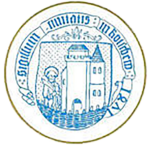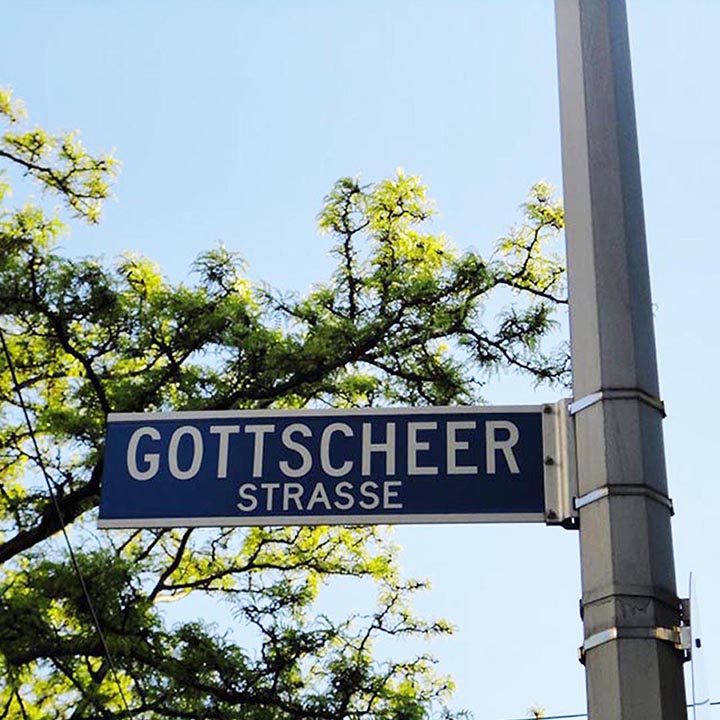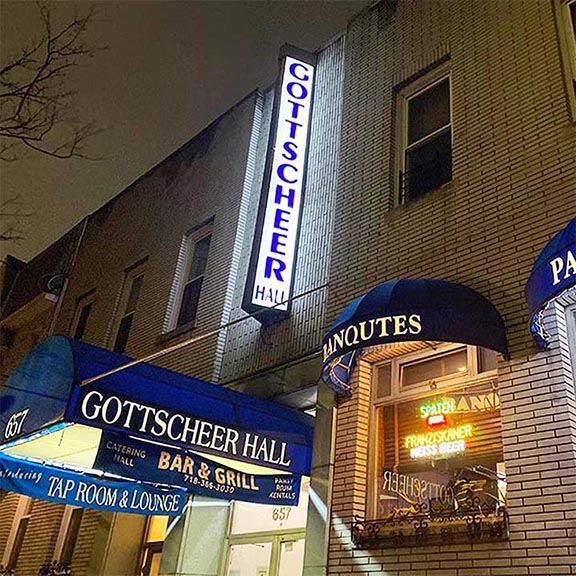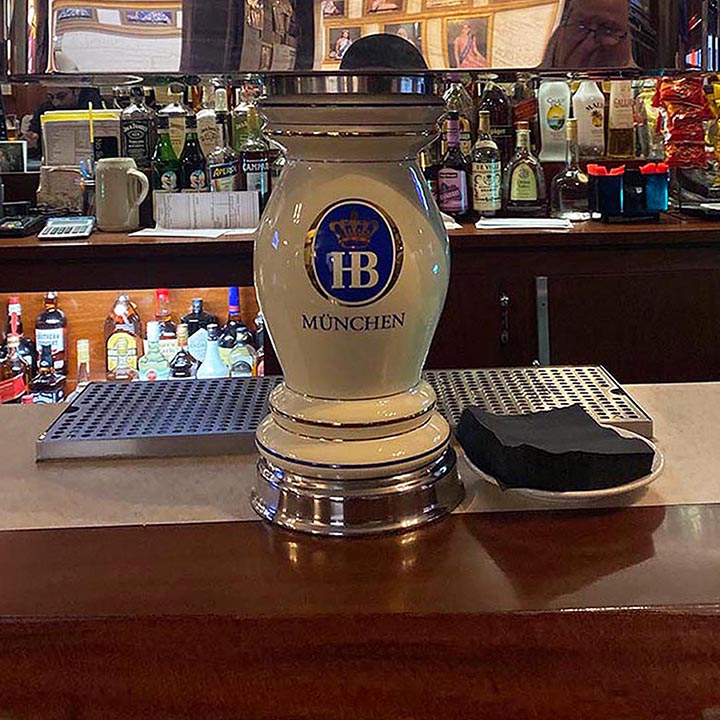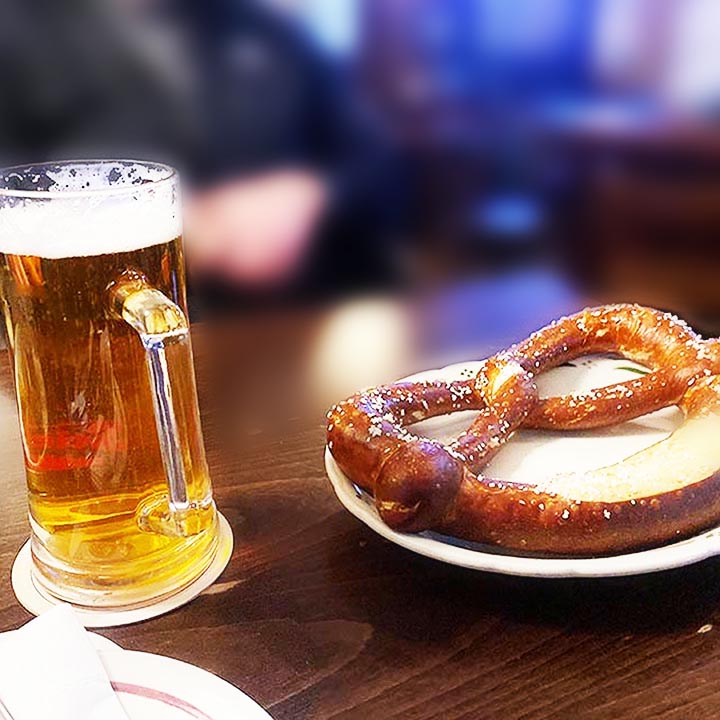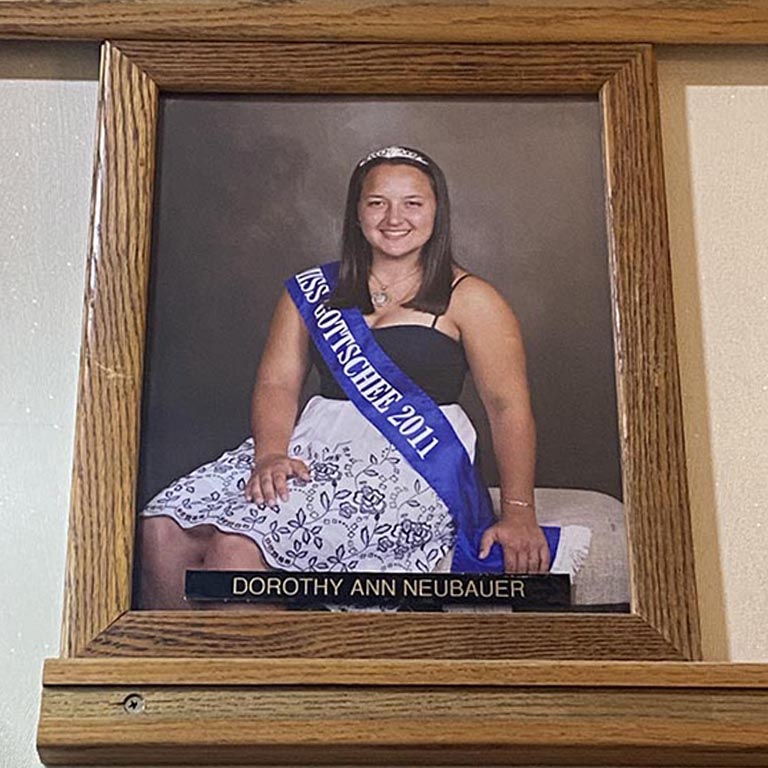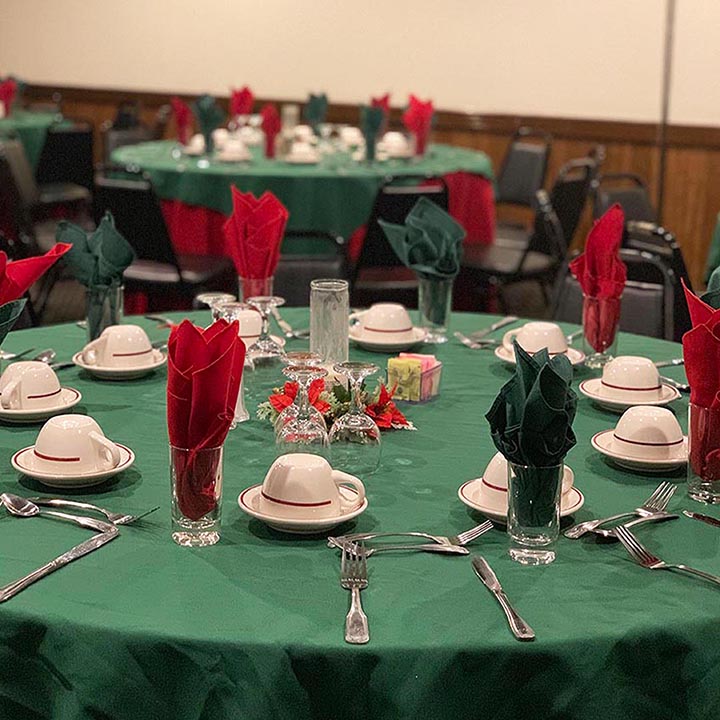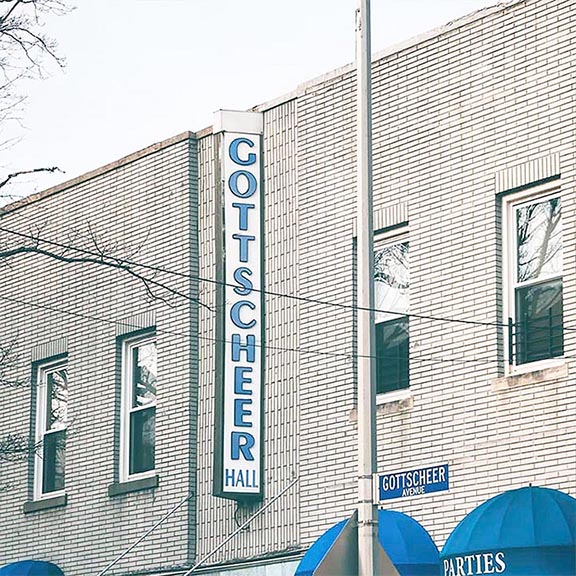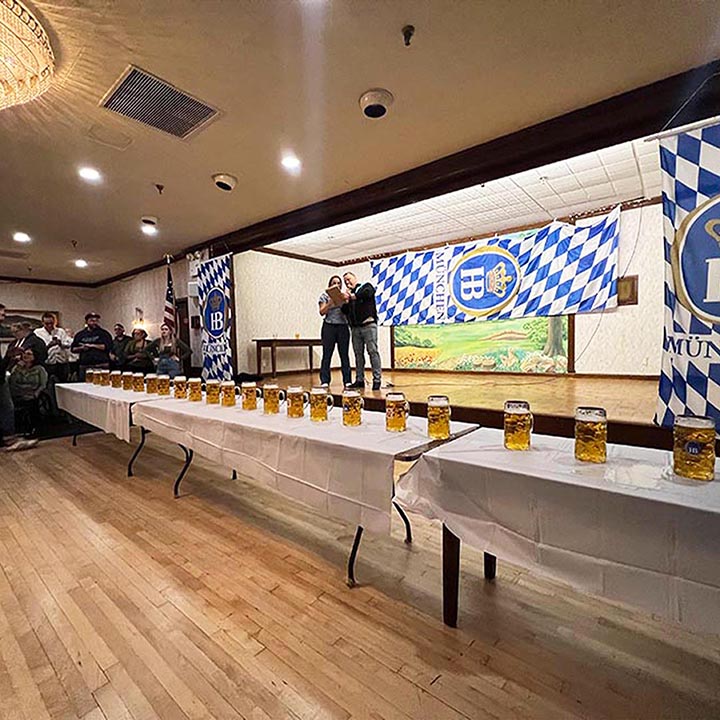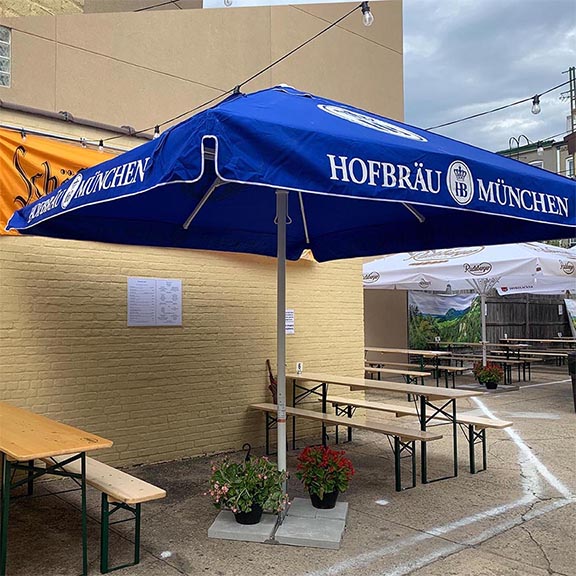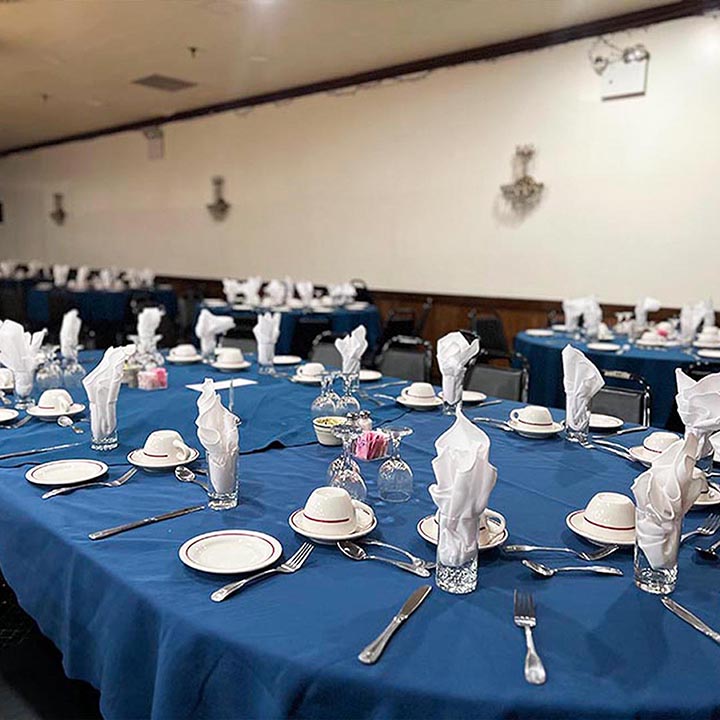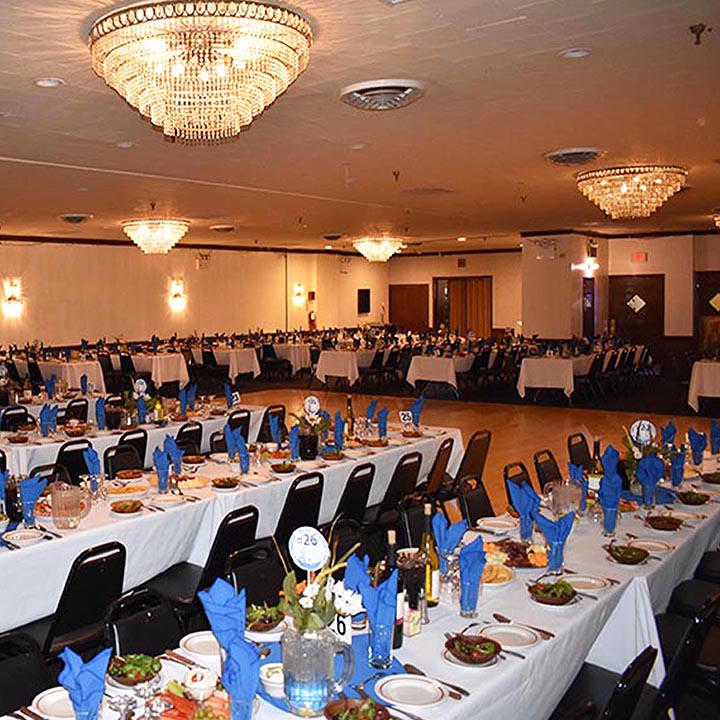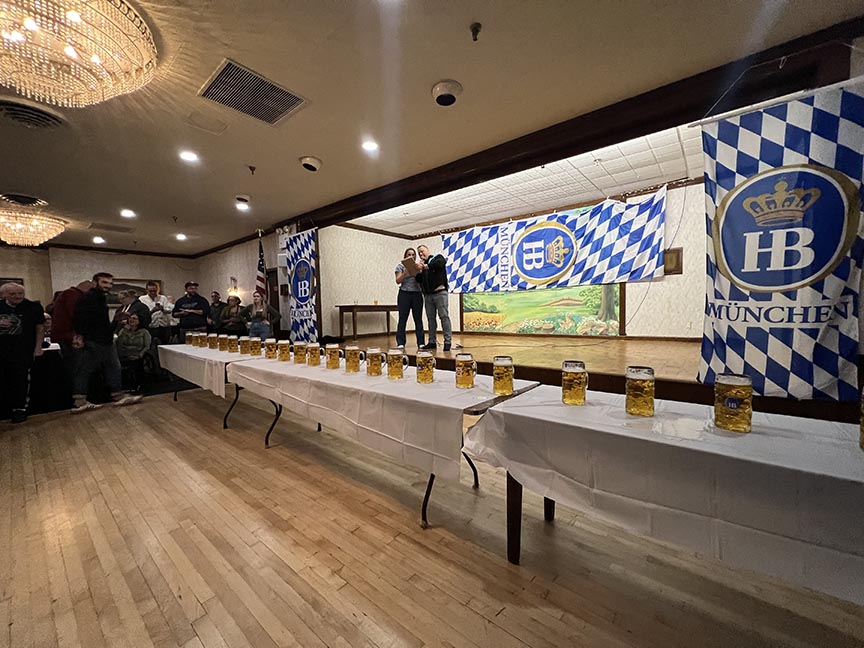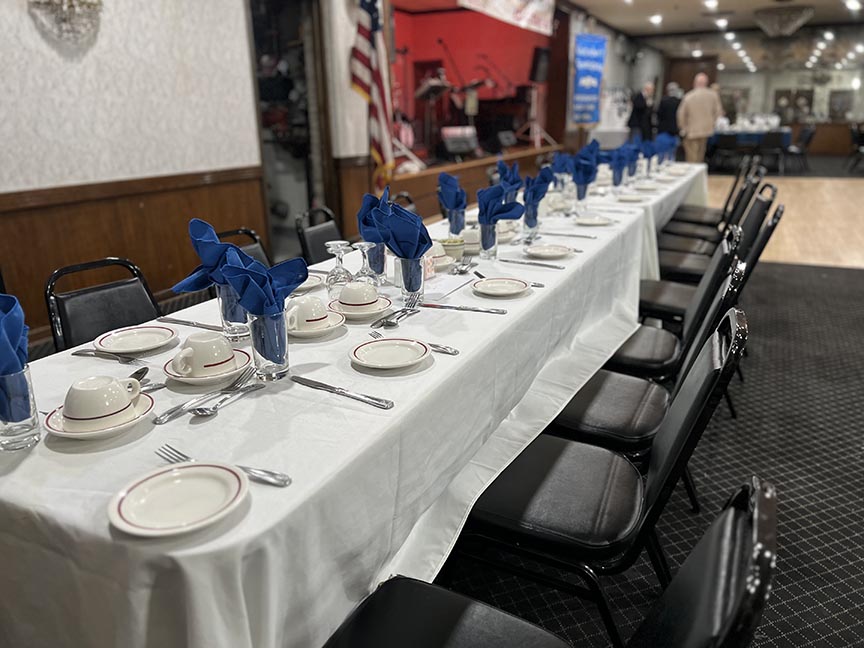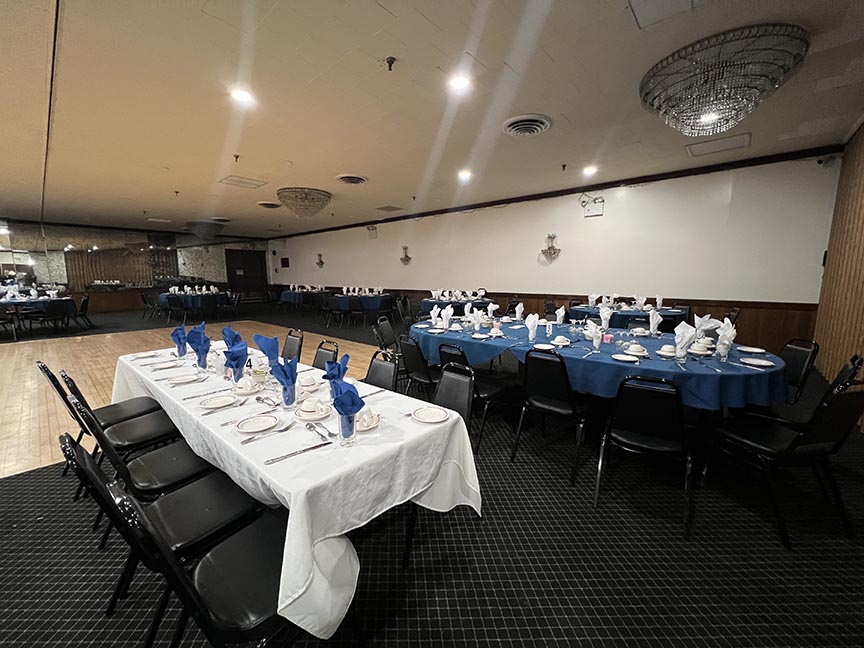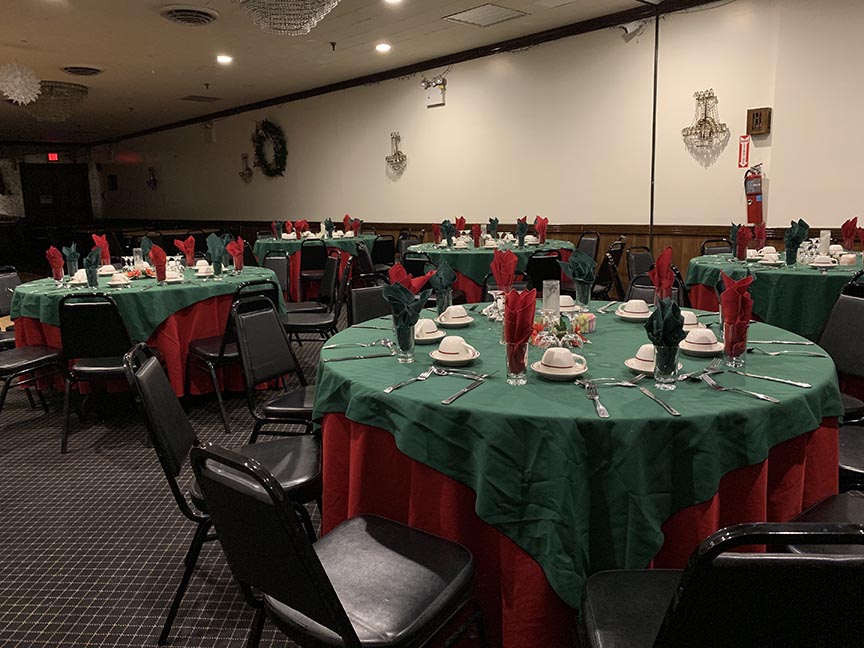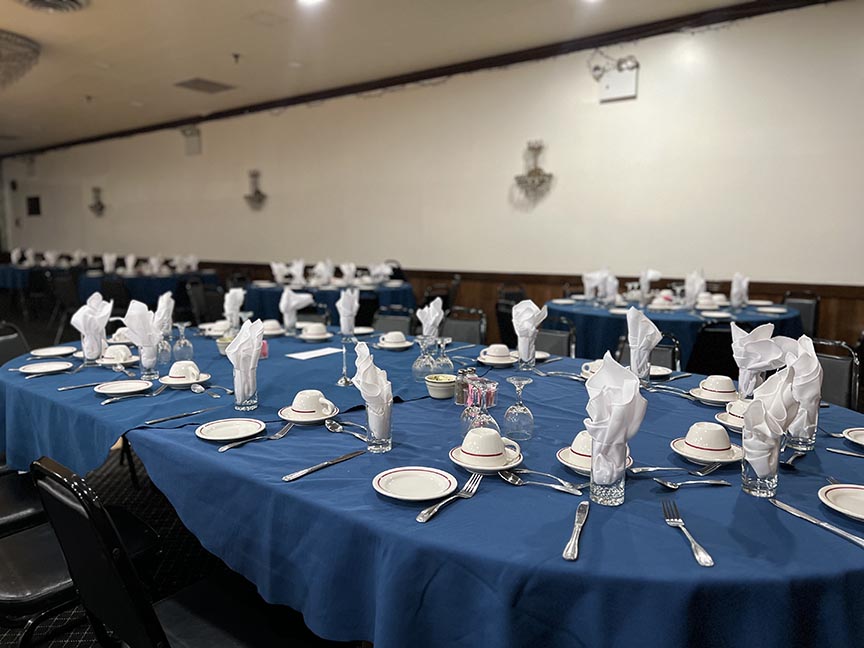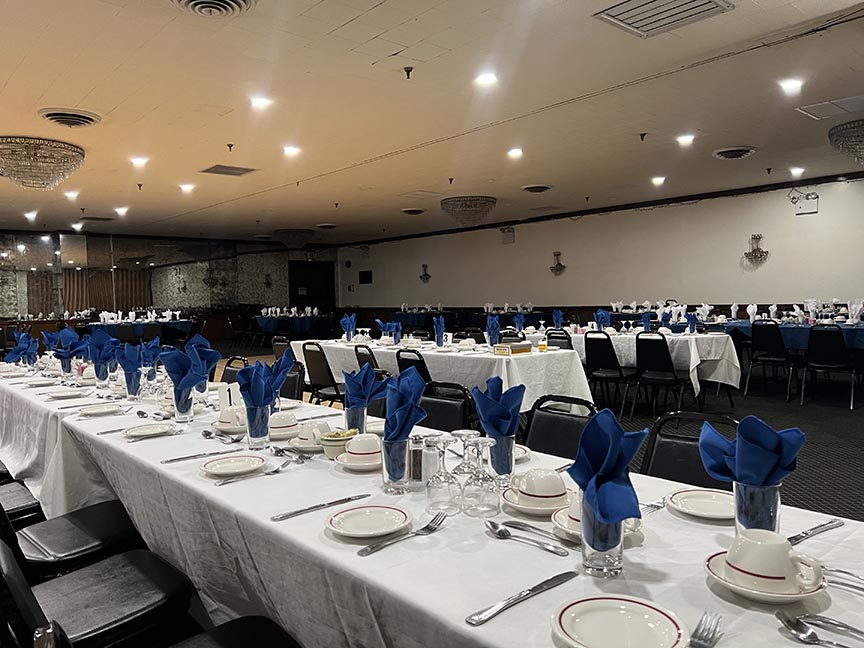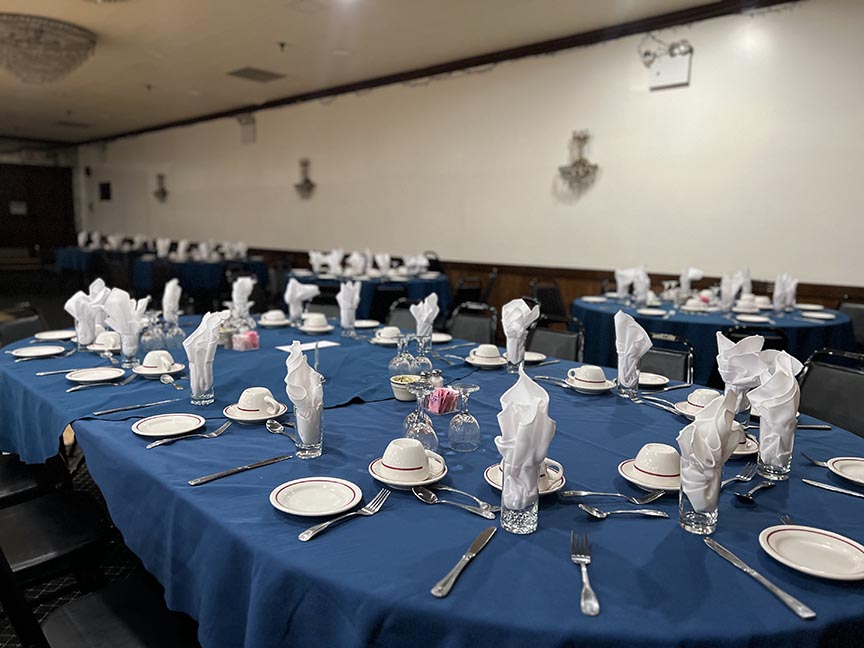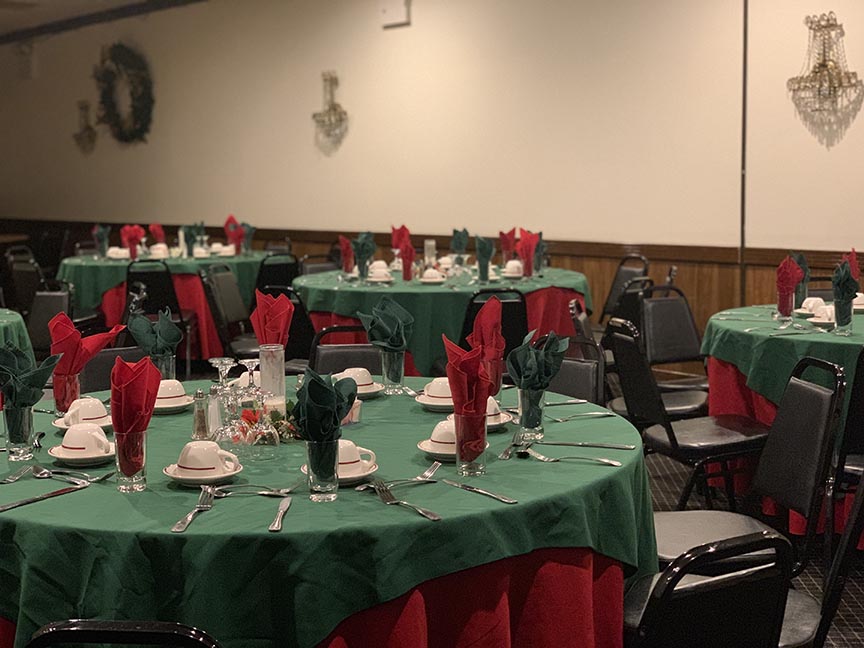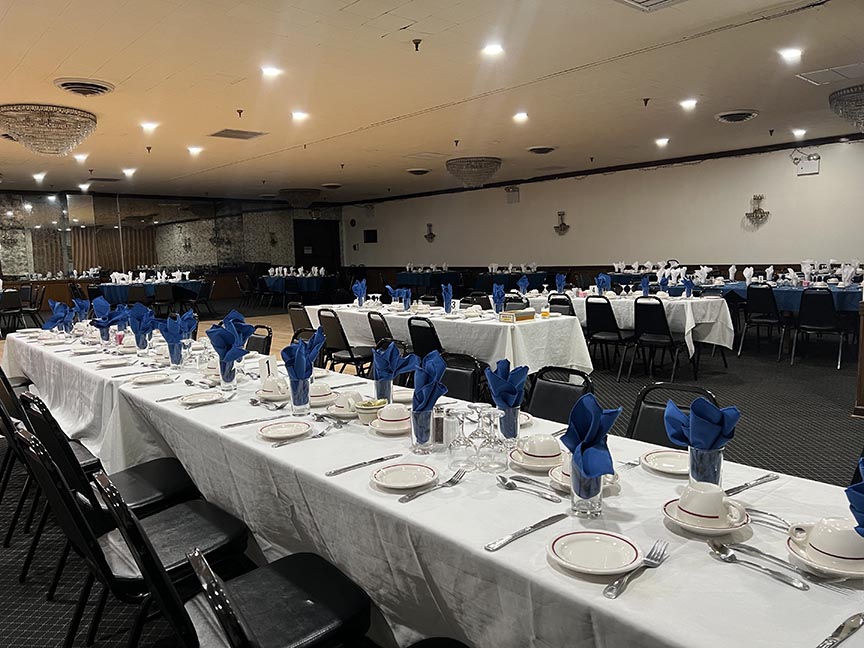About Gottscheer Hall
Good Food, Good Cheer, Good Friends!
Combining the very best of food and service with old world charm, Gottscheer Hall’s total dedication towards customer satisfaction is a long standing tradition. Serving Queens and the surrounding NYC area since 1924, Gottscheer Hall knows what it takes to make our customers happy. After all, we’ve been doing it for almost 100 years! At Gottscheer Hall, we know how important your special day is, our trained staff and attentive professionals make sure your every need is met.
Our ballroom features six crystal hanging chandeliers, and four crystal wall chandeliers, plush carpeting, an oversized dance floor, a stage for bands/DJ’s and mirrored walls adding a touch of elegance. At Gottscheer Hall we take pride in our food and it shows in the various regional and ethnic cuisines that are prepared by exceptional chefs, using the finest ingredients all made fresh and just for your party.
We offer all this and more within very reasonable price ranges that can cater to any budget.
Call today for an appointment and discover how Gottscheer Hall can make your occasion an an affair to remember!
A HISTORY OF GOTTSCHEE

In the year 1247, Patriarch Berthold, Archbishop of Aquileja and a prince of the Holy Roman Empire, gave a large estate in the province of Krain, today Slovenia, in fief to the Carinthian Counts of Ortenburg. The fief included an uninhabited, densely forested highland bordered by the rivers Cabranka, Kulpa, and Gurk. Early in the 1300’s, settlers from other Ortenburg estates arrived in this primeval forest and established a colony. An ecclesiastical document issued in 1363 refers to a pastorate at “Gotsche” in the new settlement; this is the first mention of the name of the later-day linguistic island and its center town, Gottschee, today known as Kocevje. In 1471, Emperor Friedrich III bestowed upon the town its municipal chapter and city seal.
Located in the path of the Turkish invasions of the 15th and 16th centuries, this outpost settlement of the Holy Roman Empire was overrun repeatedly. Ravages of the plague and cholera also took a heavy toll on the lives of the citizens of Gottschee. Statutory labor and oppressive taxation by feudal lords and bailiffs were other hardships to be endured, leading in 1515 to a peasant revolt that started in Gottschee and swept from there through Krain and other provinces of the empire.
In 1492, the citizens of Gottschee were granted the right to peddle the products of their home industry and other wares throughout the empire, a privilege they came to use extensively.
In 1641, Gottschee was purchased by Count Wolf Engelbrecht von Auersperg, a prominent Austrian nobleman. The House of Auersperg was given the title “Duke of Gottschee” in 1791, and the district achieved the status of a duchy.
From 1809 to 1815, Napoleon’s army occupied Gottschee.
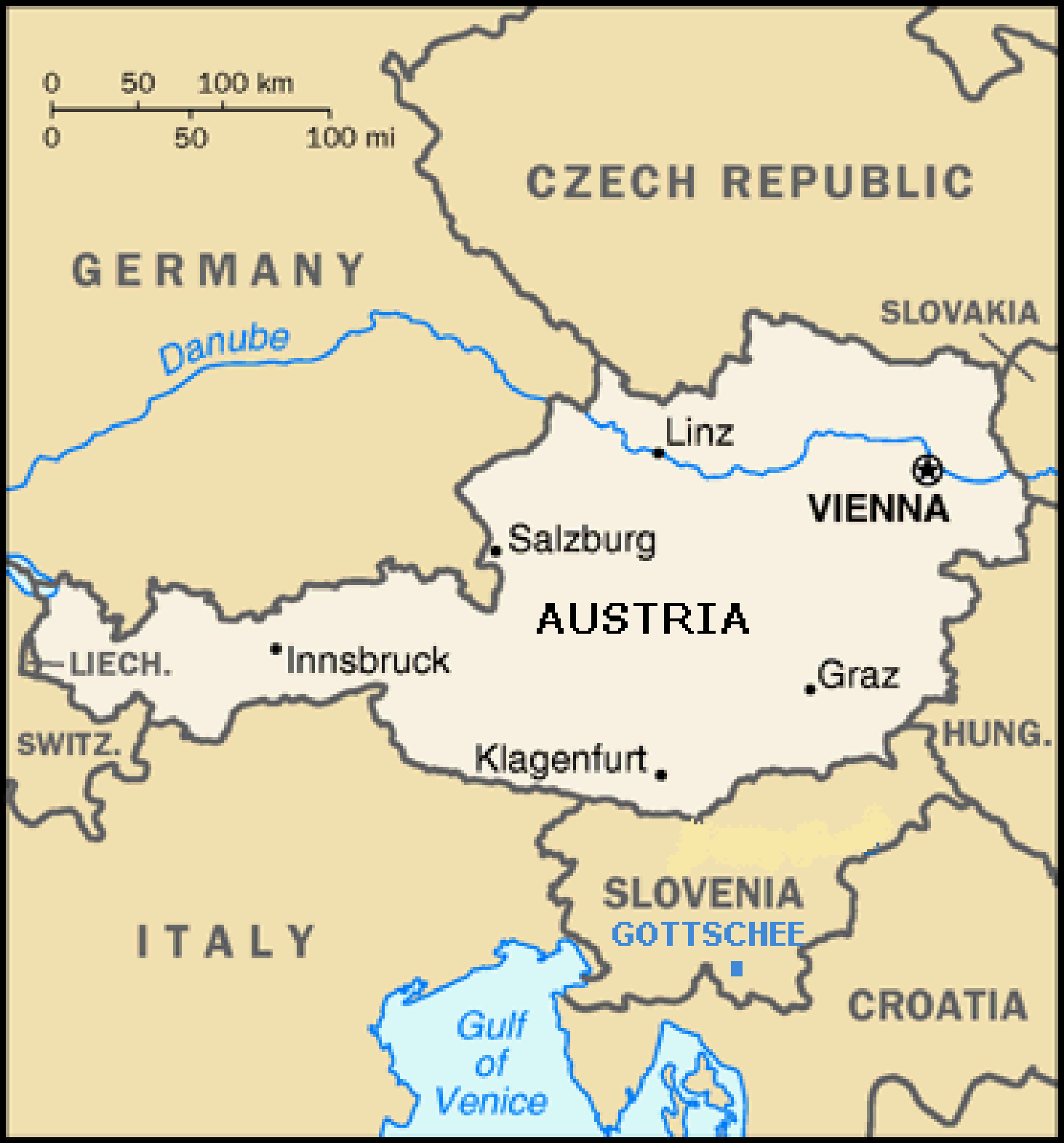
In the isolation of their highland, the people of Gottschee maintained much of the heritage of the early settlers. Their language became a distinct dialect that is considered by scholars to be a relic of the Middle Ages, today one of the oldest German dialects alive.
Europe’s population explosion in the 19th century and its subsequent mass emigration to America did not bypass Gottschee, which reached a peak population of about 26,000 in the 1880’s. The year 1918 brought a devastating blow: With the dissolution of the Austrian empire Gottschee was given to the newly formed country of Yugoslavia. In 1941, Gottschee became a territory of Italy, as a result of a treaty between Germany and Italy. Over 11,000 Gottscheers were relocated into a German annexed sector known as Untersteiermark (Lower Styria), that had formerly belonged to the Austrian province of Styria until made a part of Yugoslavia in 1918. At the end of World War II, when both Gottschee and Lower Styria were reclaimed by Yugoslavia, the people of Gottschee were made homeless and stateless and ended up as refugees and expellees in temporary camps in Austria.
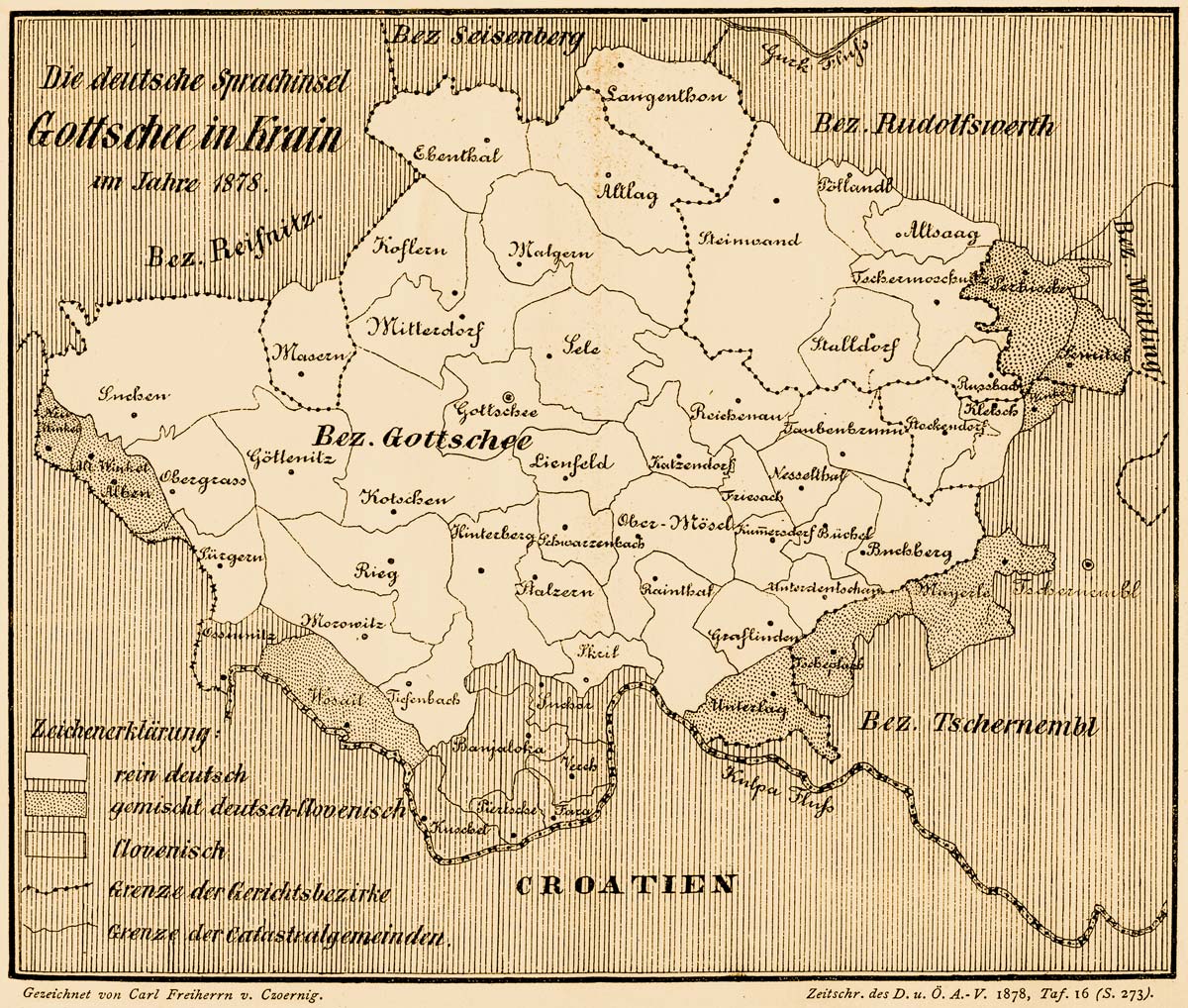
In the isolation of their highland, the people of Gottschee maintained much of the heritage of the early settlers. Their language became a distinct dialect that is considered by scholars to be a relic of the Middle Ages, today one of the oldest German dialects alive.
Europe’s population explosion in the 19th century and its subsequent mass emigration to America did not bypass Gottschee, which reached a peak population of about 26,000 in the 1880’s. The year 1918 brought a devastating blow: With the dissolution of the Austrian empire Gottschee was given to the newly formed country of Yugoslavia. In 1941, Gottschee became a territory of Italy, as a result of a treaty between Germany and Italy. Over 11,000 Gottscheers were relocated into a German annexed sector known as Untersteiermark (Lower Styria), that had formerly belonged to the Austrian province of Styria until made a part of Yugoslavia in 1918. At the end of World War II, when both Gottschee and Lower Styria were reclaimed by Yugoslavia, the people of Gottschee were made homeless and stateless and ended up as refugees and expellees in temporary camps in Austria.
Thousands of Gottscheers had come to the United States of America since the late 1800’s, settling mainly in New York and in Cleveland, Ohio. In 1945, they started a large-scale movement to help their uprooted kinfolk in Europe, who eventually migrated to many countries. Today, the largest number of Gottscheers and their descendants live in the United States of America; smaller numbers have settled in Canada, Austria, Germany, and some have found a new home in other countries.
The map above shows thelcoation of the county of Gottschee, which lies in the south central part of Slovenia, the southern border of Gottschee near the country of Croatia. The ethnic and linguistic area was about 331 square miles. Gottschee is larger than New York City’s five (5) boroughs, which cover 303 square miles of land.
